Ah, so you’re going to Italy — to Florence — the jewel of the Italian Renaissance.
Perhaps you have just booked your trip, but have months to while away before you board your plane. Perhaps you are packing as we speak, and simply need a great book to take with you. Perhaps you have just returned from Florence, and want to keep this wonderful city close to your heart.
Here is my reading list for Florence, and whether you’re looking for nonfiction and history, a book written by a famous Florentine, or you’re looking for the best novels set in Italy, you’ll find something here.
This is a list of twenty-one books that will immerse you in Florence. You’ll find Nonfiction (History & Travel Journals) first, followed by Fiction, and finally Books by Famous Florentines. Everything is listed in alphabetical order by title.
Nonfiction Reading List for Florence
| Nonfiction – History | |
|---|---|
| Book/Author/Date | Amazon Rating |
 R.W.B. Lewis, 2009 |
|
| Amazon.com Review by Wendy Smith: “History, literature, love, and religion come together in this graceful biography of the world’s most revered and influential poet. R.W.B. Lewis, who won a Pulitzer Prize for Edith Wharton, displays the same intelligent understanding here of the complex interplay of inner and outer forces that shape an artist. His lucid account of political and literary conflict in 13th-century Florence (subject of another Lewis book, The City of Florence) illuminates the context in which Dante Alighieri (1265-1321) came of age, fell in love with the unattainable Beatrice Portinari, forged the “sweet new style” that transformed Italian literature, and embroiled himself in factional disputes he would angrily renounce after his exile from Florence in 1302.” | |
 Death in Florence Paul Strathern, 2016 |
|
| Pegasus Books: “By the end of the fifteenth century, Florence was well established as the home of the Renaissance. As generous patrons to the likes of Botticelli and Michelangelo, the ruling Medici embodied the progressive humanist spirit of the age, and in Lorenzo de’ Medici (Lorenzo the Magnificent) they possessed a diplomat capable of guarding the militarily weak city in a climate of constantly shifting allegiances between the major Italian powers.
However, in the form of Savonarola, an unprepossessing provincial monk, Lorenzo found his nemesis. Filled with Old Testament fury and prophecies of doom, Savonarola’s sermons reverberated among a disenfranchised population, who preferred medieval Biblical certainties to the philosophical interrogations and intoxicating surface glitter of the Renaissance.Was this a simple clash of wills between a benign ruler and religious fanatic? Between secular pluralism and repressive extremism? In an exhilaratingly rich and deeply researched story, Paul Strathern reveals the paradoxes, self-doubts, and political compromises that made the battle for the soul of the Renaissance city one of the most complex and important moments in Western history.” |
|
 Galileo’s Daughter Dava Sobel, 2009 |
|
| Bloomsbury Press: “Inspired by a long fascination with Galileo, and by the remarkable surviving letters of his daughter Maria Celeste, a cloistered nun, Dava Sobel has crafted a biography that dramatically recolors the personality and accomplishments of a mythic figure whose early-seventeenth-century clash with Catholic doctrine continues to define the schism between science and religion-the man Albert Einstein called “the father of modern physics-indeed of modern science altogether.” It is also a stunning portrait of Galileo’s daughter, a person hitherto lost to history, described by her father as “a woman of exquisite mind, singular goodness, and most tenderly attached to me.”
“Moving between Galileo’s grand public life and Maria Celeste’s sequestered world, Sobel illuminates the Florence of the Medicis and the papal court in Rome during the pivotal era when humanity’s perception of its place in the cosmos was about to be overturned. During that same time, while the bubonic plague wreaked its terrible devastation and the Thirty Years’ War tipped fortunes across Europe, Galileo sought to reconcile the Heaven he revered as a good Catholic with the heavens he revealed through his telescope. Filled with human drama and scientific adventure, Galileo’s Daughter is an unforgettable story.” |
|
 La Bella Figura Beppe Severgnini, 2005 |
|
| A wonderfully funny read! — Ann
Random House: “Join the bestselling author of Ciao, America! on a lively tour of modern Italy that takes you behind the seductive face it puts on for visitors—la bella figura—and highlights its maddening, paradoxical true self. You won’t need luggage for this hypothetical and hilarious trip into the hearts and minds of Beppe Severgnini’s fellow Italians. In fact, Beppe would prefer if you left behind the baggage his crafty and elegant countrymen have smuggled into your subconscious. To get to his Italia, you’ll need to forget about your idealized notions of Italy. Although La Bella Figura will take you to legendary cities and scenic regions, your real destinations are the places where Italians are at their best, worst, and most authentic: The highway: in America, a red light has only one possible interpretation—Stop! An Italian red light doesn’t warn or order you as much as provide an invitation for reflection. The airport: where Italians prove that one of their virtues (an appreciation for beauty) is really a vice. Who cares if the beautiful girls hawking cell phones in airport kiosks stick you with an outdated model? That’s the price of gazing upon perfection. The small town: which demonstrates the Italian genius for pleasant living: “a congenial barber . . . a well-stocked newsstand . . . professionally made coffee and a proper pizza; bell towers we can recognize in the distance, and people with a kind word and a smile for everyone.” |
|
 Magnifico Miles Unger, 2009 |
|
| “This portrait of the ‘uncrowned ruler of Florence’ does great justice to this most intriguing of all Renaissance princes. Unger’s diligent scholarship combines with an impelling narrative to give a full-bodied flavor of the splendors as well as the horrors of Lorenzo’s remarkable reign.” — Ross King, author of Brunelleschi’s Dome and Machiavelli
“Highly absorbing . . . provides a mesmerizing microscope for viewing the entire Italian Renaissance. . . . Magnifico is a wonderful feast for lovers of Renaissance history and art.” |
|
 Michelangelo Miles Unger, 2014 |
|
| “Unger insightfully guides readers through both Michelangelo’s life and the culture and history of the times. . . . [He] displays keen, humane judgments in interpreting Michelangelo’s life by focusing on his motives and talent. The artist’s life was complicated, but Unger finds a narrative path that keeps the reader on course for an enlightened biography.” (David Hendricks San Antonio Express)“This may be the one indispensable guide for encountering the artist on his home turf. There are hundreds of books about Michelangelo di Lodovico di Buonarroti Simone, his art and his times. But few bring it all together in such an entertaining and enlightening whole.” (Bill Marvel Dallas Morning News)
“Part biography, part art analysis and thoroughly tantalizing. By focusing on six works, presented in chronological order, Unger presents a portrait of the artist that gives a panoramic view of Michelangelo’s life but also focuses keenly on putting the artwork itself in context, giving readers the whys and wherefores that provide a rich, provocative understanding.” (Catherine Mallette The Star-Telegram (Fort Worth)) |
|
 Saving Italy Robert Edsel, 2014 |
|
| From the author of the #1 New York Times bestseller The Monuments Men
“Saving Italy is an astonishing account of a little known American effort to save Italy’s vast store of priceless monuments and art during World War II. While American warriors were fighting the length of the country, other Americans were courageously working alongside to preserve the irreplaceable best of Italy’s culture. Read it and be proud of those who were on their own front lines of a cruel war.” –Tom Brokaw”A suspenseful tale worthy of an Indiana Jones plot. He pulls you into a dangerous web of intrigue in which the Vatican, top German SS generals, American OSS operatives and Italian officials are entwined in top-secret negotiations to end the war. A must read for any WWII history enthusiast.” –Gordon H. Nick Mueller, President/CEO, The National WWII Museum |
|
| Older Travel Writing | |
 Italian Backgrounds |
|
| Amazon: “Probably one of the most insightful and different of the collection of works written throughout the 19th and early 20th century called travel writings, Italian Backgrounds was one of two books Edith Wharton wrote as a passionate love letter to the country that both she and her husband loved so dearly.What sets this book apart is how far Wharton and her husband, Edward, travel off the beaten path. When her contemporaries were content to explore the well worn paths and streets of Rome, Wharton pushed deep into the Italian countryside, finding exquisite vistas, buildings, and works of art that the rest of her ilk would not discover for decades.
Intimate, intelligent, witty, and thoroughly engaging on every level, Italian Backgrounds is a must for Wharton lovers. Edith Wharton(1862-1937) was born into a distinguished New York family and was educated privately in the United States and abroad. Among her best-known work is Ethan Frome (1911), which is considered her greatest tragic story, he House of Mirth (1905), and The Age of Innocence (1920), for which she was awarded the Pulitzer Prize.” |
|
 The Stones of Florence |
|
| Amazon: “Renowned for her sharp literary style, essayist and fiction writer Mary McCarthy offers a unique history of Florence, from its inception to the dominant role it came to play in the world of art, architecture, and Italian culture, that captures the brilliant Florentine spirit and revisits the legendary figures—Dante, Michelangelo, Machiavelli, and others—who exemplify it so iconically. Her most cherished sights and experiences color this timeless, graceful portrait of a city that’s as famous as it is alluring.””Mary McCarthy (1912–1989) was an American literary critic and author of more than two dozen books including the 1963 New York Times bestseller The Group.
Born in Seattle, McCarthy studied at Vassar College in Poughkeepsie, New York, and graduated in 1933. After moving to New York City, McCarthy became known for her incisive writing as a contributor to publications such as the Nation, the New Republic, and the New York Review of Books. Her debut novel, The Company She Keeps (1942), initiated her ascent to become one of the most celebrated writers of her generation, a reputation bolstered by the publication of her autobiography Memories of a Catholic Girlhood in 1957, as well as that of her now-classic novel The Group.” |
|
Fiction Reading List for Florence
Perhaps you’re looking for novels set in Italy, that will help you time travel to the Renaissance period. This list of eight novels set in Florence includes both historical fiction, and books set in the early and mid 20th century. For many readers, novels that take place in Italy are the perfect way to get in the mood for a great trip.
| Fiction | |
|---|---|
| Book/Author/Date | Amazon Rating |
 Irving Stone, 1961 |
|
| Berkley Press: “From the tumult of life, his brilliant work made a grasp for heaven unmatched in half a millennium. Now, in a special edition celebrating the 500th anniversary of Michelangelo’s David, Irving Stone’s towering triumph: The Agony and the Ecsatasy.””It might not be too far-fetched to say that calling The Agony and the Ecstasy a ‘biographical novel’ is as inadequate a description as calling the Sistine Chapel ceiling a large religious mural . . . . The book is a living, pulsating thing with all the pageantry, the brilliance, and the drama of life.” — Los Angeles Examiner | |
 Sarah Dunant, 2004 |
|
| From Publisher’s Weekly: “In this arresting tale of art, love and betrayal in 15th-century Florence, the daughter of a wealthy cloth merchant seeks the freedom of marriage in order to paint, but finds that she may have bought her liberty at the cost of love and true fulfillment. Alessandra, 16, is tall, sharp-tongued and dauntingly clever. At first reluctant to agree to an arranged marriage, she changes her mind when she meets elegant 48-year-old Cristoforo, who is well-versed in art and literature. He promises to give her all the freedom she wants-and she finds out why on her wedding night.
Her disappointment and frustration are soon overshadowed by the growing cloud of madness and violence hanging over Florence, nourished by the sermons of the fanatically pious Savonarola.As the wealthy purge their palazzos of “low” art and luxuries, Alessandra gives in to the dangerous attraction that draws her to a tormented young artist commissioned to paint her family’s chapel. With details as rich as the brocade textiles that built Alessandra’s family fortune, Dunant (Mapping the Edge; Transgressions; etc.) masterfully recreates Florence in the age of the original bonfire of the vanities. The novel moves to its climax as Savonarola’s reign draws to a bloody close, with the final few chapters describing Alessandra’s fate and hinting at the identity of her artist lover. While the story is rushed at the end, the author has a genius for peppering her narrative with little-known facts, and the deadpan dialogue lends a staccato verve to the swift-moving plot. Forget Baedecker and Vasari’s Lives of the Artists. Dunant’s vivid, gripping novel gives fresh life to a captivating age of glorious art and political turmoil.” |
|
 Ross King, 2000 |
|
| Filippo Brunelleschi’s design for the dome of the cathedral of Santa Maria del Fiore in Florence remains one of the most towering achievements of Renaissance architecture. Completed in 1436, the dome remains a remarkable feat of design and engineering. Its span of more than 140 feet exceeds St Paul’s in London and St Peter’s in Rome, and even outdoes the Capitol in Washington, D.C., making it the largest dome ever constructed using bricks and mortar. The story of its creation and its brilliant but “hot-tempered” creator is told in Ross King’s delightful Brunelleschi’s Dome.”Both dome and architect offer King plenty of rich material.
The story of the dome goes back to 1296, when work began on the cathedral, but it was only in 1420, when Brunelleschi won a competition over his bitter rival Lorenzo Ghiberti to design the daunting cupola, that work began in earnest. King weaves an engrossing tale from the political intrigue, personal jealousies, dramatic setbacks, and sheer inventive brilliance that led to the paranoid Filippo, “who was so proud of his inventions and so fearful of plagiarism,” finally seeing his dome completed only months before his death. King argues that it was Brunelleschi’s improvised brilliance in solving the problem of suspending the enormous cupola in bricks and mortar (painstakingly detailed with precise illustrations) that led him to “succeed in performing an engineering feat whose structural daring was without parallel.” He tells a compelling, informed story, ranging from discussions of the construction of the bricks, mortar, and marble that made up the dome, to its subsequent use as a scientific instrument by the Florentine astronomer Paolo Toscanelli.” –Jerry Brotton, Amazon.co.uk |
|
 Linda Proud, 2012 |
|
| The Historical Novel Society: “A Gift for the Magus is a stand alone prequel to Linda’s wonderful Botticelli trilogy (also available from Godstow Press), in that the young Sandro Botticelli appears as apprentice to the main protagonist, Fra Filippo Lippi. Lippi is conventionally devout for his time but, given to the Carmelite order as a young child, he is deeply flawed as a friar, being altogether too human in his desires. He loves food, drink and gambling; he enjoys women; and is frequently in trouble. He is fallible and gullible, but so extremely likeable that it is impossible not to have empathy with him while he also struggles with procrastination and the desire to be perfect in his painting.
Lippi was the favourite painter of Cosimo de’ Medici; first citizen of Florence, founder of a dynasty, banker, patron of the arts, re-founder of the Platonic Academy, astute and ruthless politician and the magus of the title. But Cosimo is also a human being, with his own desires and fears and the relationship between the two men is deep and extremely well drawn. Lippi’s scandalous relationship with the nun, Lucrezia, defies the conventional belief that ‘to be a good painter you must be a good man’. But what is the nature of goodness? Is anything in the lives of human beings ever that straightforward? This is really excellent writing with characters who live real lives with humour and self-reflection. There are some lovely images that fit so well with the whole ethos of the story. It will inspire you to look at the art and discover more about the minds of the great Renaissance thinkers, and you will want to read the trilogy that follows. I cannot recommend it more highly—this is a most excellent read!” |
|
 The Light in the Piazza |
|
| Amazon: “In The Light in the Piazza (a novella which has become both Spencer’s signature piece and a Hollywood film) a stranger from North Carolina, traveling with her beautiful daughter, encounters the intoxicating beauty of sunlit Florence and discovers a deep conflict in the moral dilemma it presents. “I think this work has great charm,” Spencer has said, “and it probably is the real thing, a work written under great compulsion, while I was under the spell of Italy. But it took me, all told, about a month to write.”
In Knights and Dragons (another novella and a companion piece to The Light in the Piazza) an American woman in Rome and Venice struggles for release from her husband’s sinister control over her. Spencer sets this tale in the cold and wintry dark and here portrays the other face of Italy. In “The Cousins,” “The Pincian Gate,” “The White Azalea,” and “The Visit,” Spencer shows the exceptional artistry that has merited acclaim for her as one of America’s first-class writers of the short story.” Light in the Piazza was made into a musical and won the Tony for Best Musical in 2005. |
|

Susan Vreeland, 2002 |
|
| Amazon Review: “Like her bestselling debut, Girl in Hyacinth Blue, Susan Vreeland’s second novel, The Passion of Artemisia, traces a particular painting through time: in this case, the post-Renaissance painter Artemisia Gentileschi’s violent masterpiece, “Judith.” Although the novel purports to cover the life of the painter, the painting serves as a touchstone, foreshadowing Artemisia’s rape by Agostino Tassi, an assistant in her father’s painting studio in Rome; the well-documented (and humiliating) trial that followed; the early days of her hastily arranged marriage; and her eventual triumph as the first woman elected to the Accademia dell’ Arte in Florence.
Although Vreeland makes a bit free with her characters (which she admits in her introduction), attributing some decidedly modern attitudes to people who would not have thought that way at the time, her book is beautifully researched and rich with casual detail of clothing, interiors, and street life. She deftly works history and politics into the background of her canvas, keeping her focus on Artemisia and her family. Beyond the paintings Artemisia left behind, Vreeland’s vision may be as close as we can come to understanding the anger and ambition that kept this talented woman at the doors of the Accademia, demanding entrance, in a time when respectable women rarely left their homes.” –Regina Marler |
|
 A Room with a View |
|
| Bantam: “This Edwardian social comedy explores love and prim propriety among an eccentric cast of characters assembled in an Italian pensione and in a corner of Surrey, England.A charming young Englishwoman, Lucy Honeychurch, faints into the arms of a fellow Britisher when she witnesses a murder in a Florentine piazza. Attracted to this man, George Emerson—who is entirely unsuitable and whose father just may be a Socialist—Lucy is soon at war with the snobbery of her class and her own conflicting desires. Back in England, she is courted by a more acceptable, if stifling, suitor and soon realizes she must make a startling decision that will decide the course of her future: she is forced to choose between convention and passion.
The enduring delight of this tale of romantic intrigue is rooted in Forster’s colorful characters, including outrageous spinsters, pompous clergymen, and outspoken patriots. Written in 1908, A Room with a View is one of E. M. Forster’s earliest and most celebrated works.” |
|
 A Tabernacle for the Sun |
|
| Amazon Review: “A Tabernacle for the Sun is a novel set in the Florence of Lorenzo de’ Medici and is the first part of The Botticelli Trilogy. Freedom – is it Florence without the Medici, or a condition of the soul? This is the question facing Tommaso de’ Maffei, an apprentice scribe who cannot forgive Lorenzo for sacking his native city of Volterra. But if he would join the Platonic Academy and take the journey of the soul, he must reconcile himself to Lorenzo. Meanwhile his family draws him into a conspiracy against the Medici. To avoid the turmoil, both inner and outer, he takes refuge in the painter’s workshop where his friend, Filippino, is an apprentice.This book draws the reader into the Renaissance, to walk the streets of Florence, meet its famous men, loiter awhile in Botticelli’s workshop and see one of the world’s greatest paintings grow from first sketches through to finished panel, even as daggers are drawn and blood begins to spill.
Since its first publication in 1997, A Tabernacle for the Sun has met rapturous response from readers and reviewers and has become a classic travel companion for anyone going to Tuscany, as recommended by Lonely Planet guide to Florence and Tuscany. ‘The historical detail … is exemplary and [it’s] a cracking good read.'” |
|
Why aren’t Dan Brown’s books listed? I don’t like them. While the mystery and drama are fun, the historical inaccuracies and fabrications get under my skin, and I just can’t. I will, and do, watch the films. Hey, I love Tom Hanks, and the scenery, and somehow the complete fiction annoys me less than when I read the novels. If you love them, I’m thrilled for you, and by all means enjoy them — and put them on your list. They simply don’t go on mine.
Books by Famous Florentines
If you’re going to be in this lovely city, I heartily recommend delving into these four classics. Even if you don’t read all of each one — simply reading several of the tales from the Decameron, parts of the Divine Comedy, and picking and choosing a few artists from Vasari — these works are classics for a reason. I re-read parts of the Divine Comedy a couple of years ago, and thoroughly enjoyed it.
Well, I hope twenty-one books is enough to keep you busy for awhile. I’ve read Magnifico, Brunelleschi’s Dome, The Agony and the Ecstasy, A Room with a View, the Decameron, the Divine Comedy, the Prince — and parts of Vasari’s Lives of the Artists, and the rest of these are on my reading list. As I write this, I am in Florence, and I’m currently working on two of these books: Michelangelo: A Life in Six Masterpieces and The Birth of Venus — both of which I am greatly enjoying.
If you have books you’d like to see added to the list — please feel free to share them in the comments below!
(Quick jump back up the page: Nonfiction (History & Travel Journals), Fiction.)
* * * * * * *
Some of the links on AnnCavittFisher.com are affiliate links. If you buy a product or service by clicking on an affiliate link, I will get a small commission, at no extra cost to you, my reader. This helps support the writing and photography work I do. Many thanks!
| Like it? Share it! 🙂 | |
|---|---|
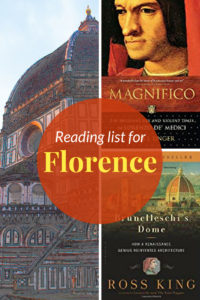 |
 |
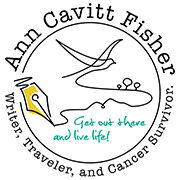






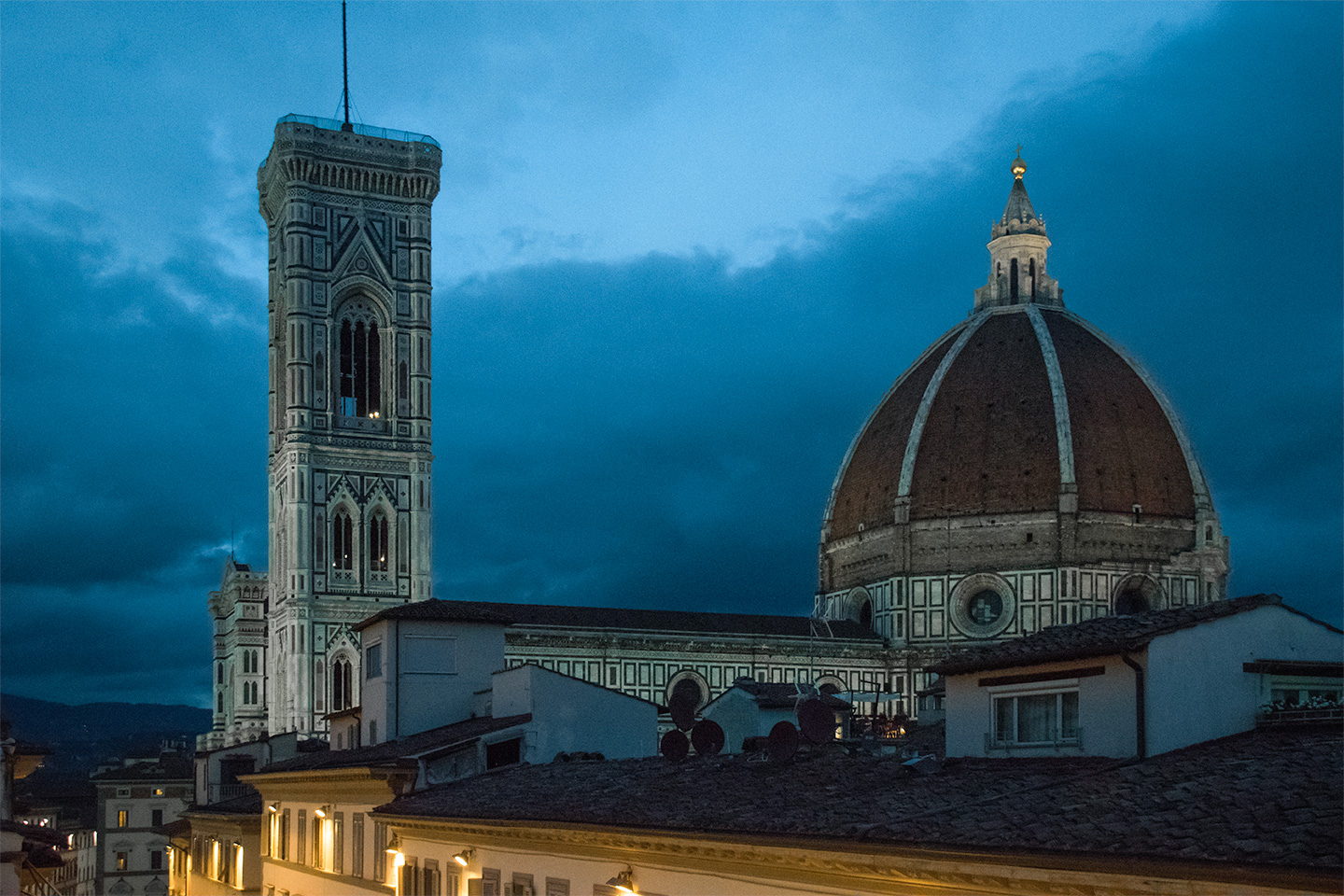
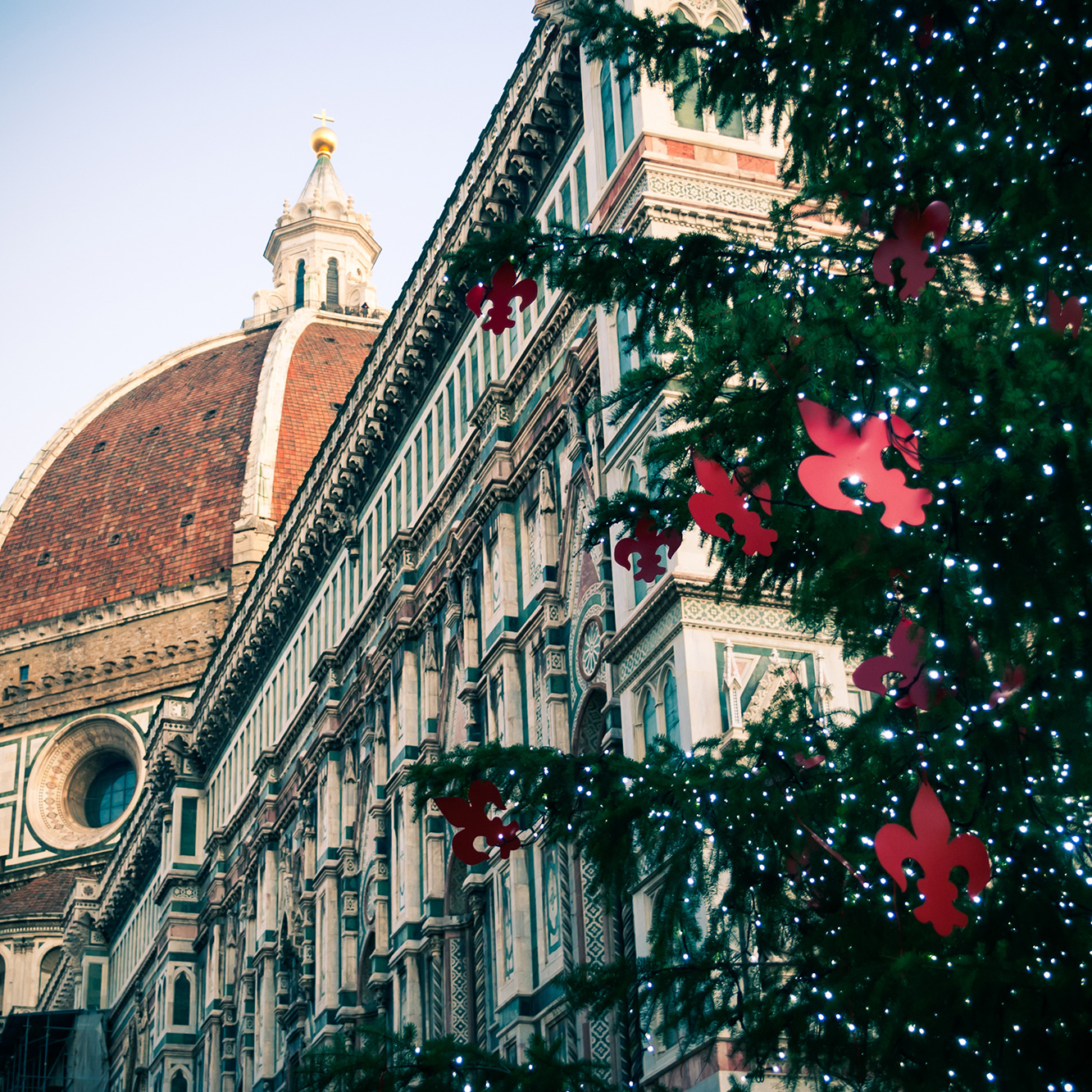
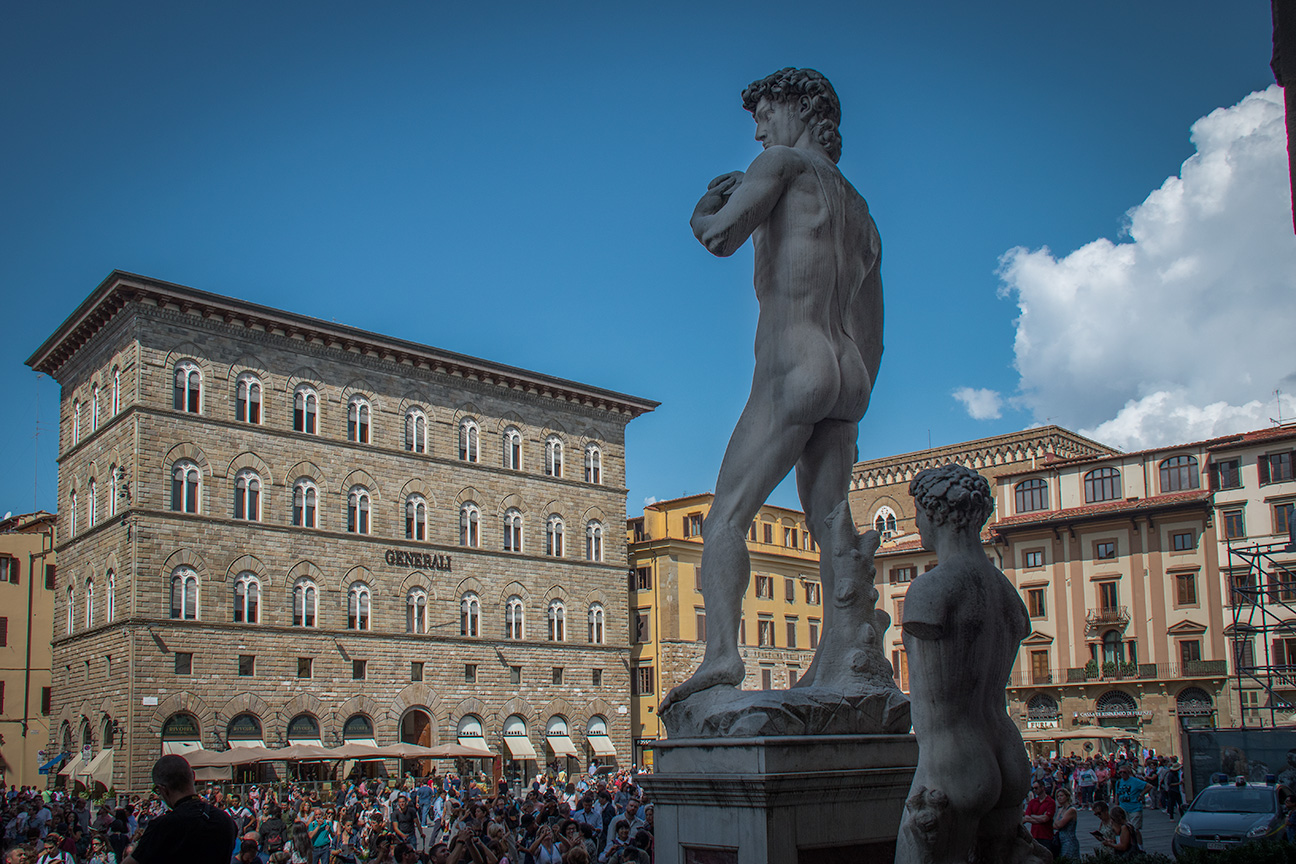
I’m always looking for new reading suggestions! I’ve also been wanting to read the Diving Comedy since visiting Florence. Thanks for the tips!
[…] Books about Italy: A Reading List for Florence […]
I love historical fiction and I always try to read a book or two on a place before I visit. However, I’ve been to Florence twice and have yet to do that. This list gives me a few to check out for my future trip!
Florence is such a lovely place that inspired so many great stories! Definitely would check out some of those on your list.
Wow, what an amazingly comprehensive reading list! I devour books on whatever country I’m about to visit, so I appreciate your recommendations. La Bella Figura has actually been on my list for a while, as has Dante’s Divine Comedy. My dad has an old copy of Dante’s works… time to dust it off and check it out!
Thanks! I’m the same way about reading books about whatever location I’m traveling — so the list just seemed like the kind of thing I’m always looking for. — Hope you enjoy the Dante read. It was much more meaningful to me at this stage in my life than it was when I had to read it in high school :-).
Yay! I love getting new book recos. I added a couple of these to my library list. Dante’s book gave me horrible flashbacks. I hated reading that in college. Great list, though. I think it’s always nice to read books set in, or about a city you’re getting ready to visit. Puts you in the right mind space.
Trying to read ALL of the Divine Comedy IS a bit daunting — but even reading several of the cantos will get you into a Dante frame of mind.
What a great list of books to get us familiar with Florence! I personally would love to read A Field Guide to the Italian Mind. It seems like a light read and a fun one!
It’s a great read — very funny stuff!
I would really like to read The Field Guide to an Italian Mind. I think the collective spirit and joy of the Italian culture is rare and fascinating. Here in So Cal, we have the same great weather and seasonal overcrowding but it seems like the joy is missing. I wonder what the essential difference is. I am currently reading the Four Hour Work Week but will finish that soon. In the next two weeks I am driving to Santa Cruz and on anther trip driving to the Mojave Desert so I have a lot of time for books on tape.
Well, the Italian Mind should definitely make you smile.
Thank you Ann. What a wonderful reading list and what a wonderful holiday it would be to spend leisure time in Florence with this reading list!
I love to read, and I get at least one more novel or history each time I come to Florence, so I figured it was time to make a list :-).
Just thoughtâ¦have you ever seen Dangerous Beauty? It is one of my favorite movies but the venue is Venice. It never received my press or praiseâ¦but quite goodâ¦and the costumes are incredible! Historical fiction but good entertainment.
https://www.youtube.com/watch?v=xYu37jF0d3c
Yes, — it’s been a while, but what a beautiful movie!
Ann:
I am hopeful that you weathered the storm in good form. I was most fortunate with no water or wind damage. I left town for my friendâs ranch in Bandera the Thursday before the storm hit; and did not return until this Friday past. I was most concerned about the back patio and water pooling thereâ¦but no such event. Many of my friends and colleagues were not near as fortunate. Anadarko (my employer) closed the office all last week and immediately donated one million dollars to the Houston United Way/Red Crossâ¦very good corporate citizen here in Houston and in our international venues. I hope that you are ok. Take care!
Regards, John
Hi John, Yes, we are fine — no flooding, and happy to hear the house on Post Oak did well also. Happy you were out of it in Bandera. I’m in Florence now and will be back in Houston on the 18th.
— Ann